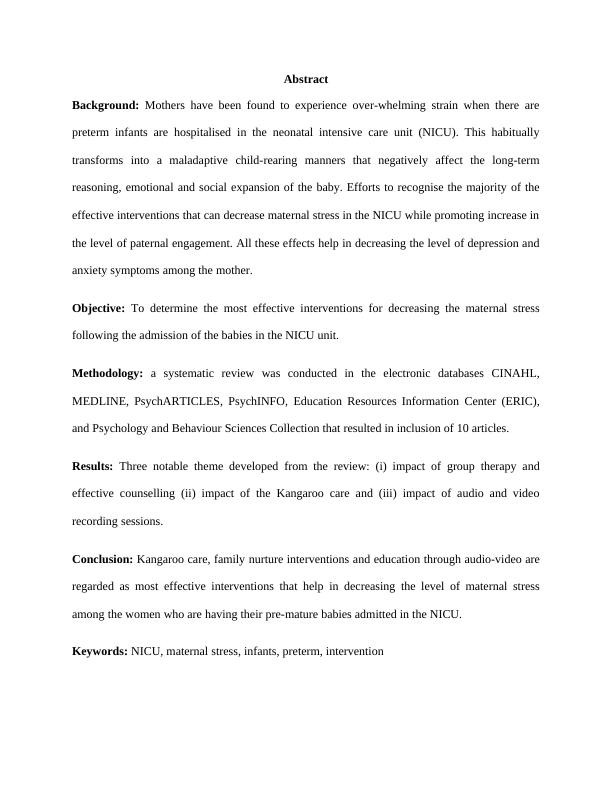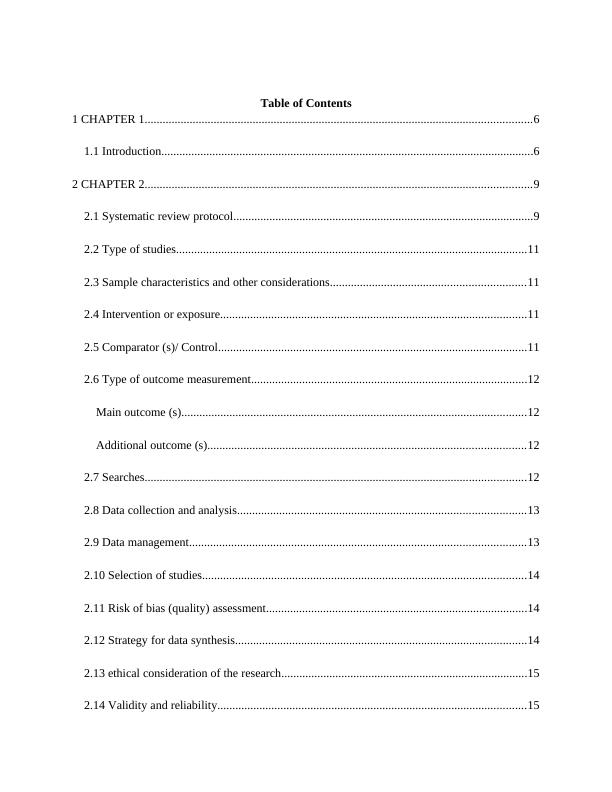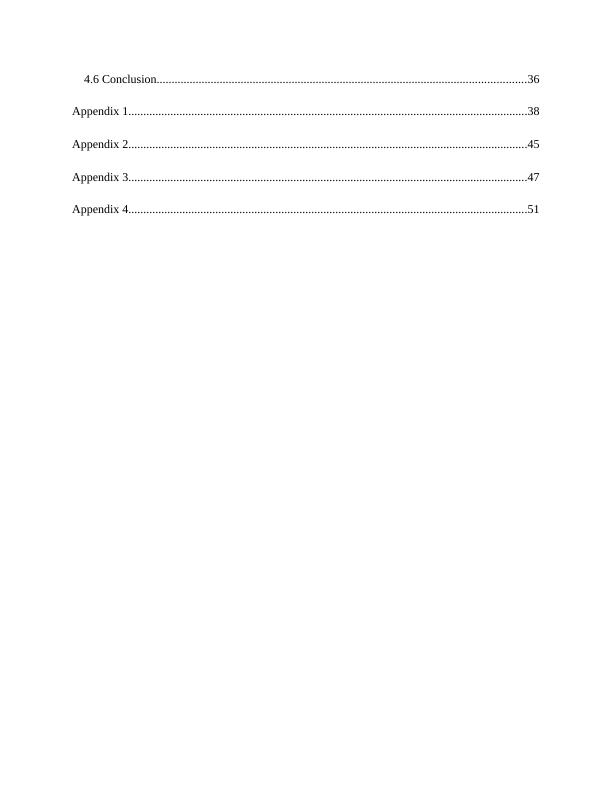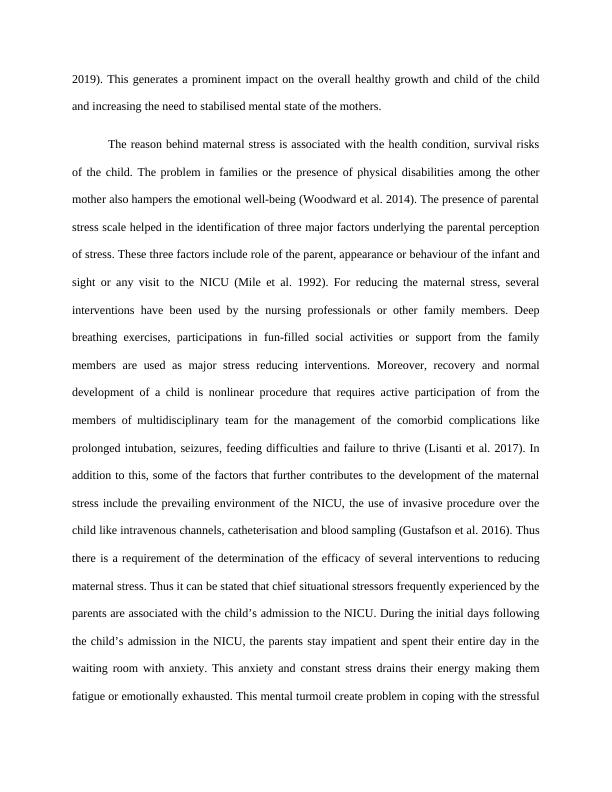Intervention to Reduce Maternal Stress in NICU
Added on 2023-01-10
94 Pages19467 Words21 Views
Abstract
Background: Mothers have been found to experience over-whelming strain when there are
preterm infants are hospitalised in the neonatal intensive care unit (NICU). This habitually
transforms into a maladaptive child-rearing manners that negatively affect the long-term
reasoning, emotional and social expansion of the baby. Efforts to recognise the majority of the
effective interventions that can decrease maternal stress in the NICU while promoting increase in
the level of paternal engagement. All these effects help in decreasing the level of depression and
anxiety symptoms among the mother.
Objective: To determine the most effective interventions for decreasing the maternal stress
following the admission of the babies in the NICU unit.
Methodology: a systematic review was conducted in the electronic databases CINAHL,
MEDLINE, PsychARTICLES, PsychINFO, Education Resources Information Center (ERIC),
and Psychology and Behaviour Sciences Collection that resulted in inclusion of 10 articles.
Results: Three notable theme developed from the review: (i) impact of group therapy and
effective counselling (ii) impact of the Kangaroo care and (iii) impact of audio and video
recording sessions.
Conclusion: Kangaroo care, family nurture interventions and education through audio-video are
regarded as most effective interventions that help in decreasing the level of maternal stress
among the women who are having their pre-mature babies admitted in the NICU.
Keywords: NICU, maternal stress, infants, preterm, intervention
Background: Mothers have been found to experience over-whelming strain when there are
preterm infants are hospitalised in the neonatal intensive care unit (NICU). This habitually
transforms into a maladaptive child-rearing manners that negatively affect the long-term
reasoning, emotional and social expansion of the baby. Efforts to recognise the majority of the
effective interventions that can decrease maternal stress in the NICU while promoting increase in
the level of paternal engagement. All these effects help in decreasing the level of depression and
anxiety symptoms among the mother.
Objective: To determine the most effective interventions for decreasing the maternal stress
following the admission of the babies in the NICU unit.
Methodology: a systematic review was conducted in the electronic databases CINAHL,
MEDLINE, PsychARTICLES, PsychINFO, Education Resources Information Center (ERIC),
and Psychology and Behaviour Sciences Collection that resulted in inclusion of 10 articles.
Results: Three notable theme developed from the review: (i) impact of group therapy and
effective counselling (ii) impact of the Kangaroo care and (iii) impact of audio and video
recording sessions.
Conclusion: Kangaroo care, family nurture interventions and education through audio-video are
regarded as most effective interventions that help in decreasing the level of maternal stress
among the women who are having their pre-mature babies admitted in the NICU.
Keywords: NICU, maternal stress, infants, preterm, intervention

Intervention to reduce maternal stress following the admission of babies to neonatal internsive
care units
care units

Table of Contents
1 CHAPTER 1.................................................................................................................................6
1.1 Introduction............................................................................................................................6
2 CHAPTER 2.................................................................................................................................9
2.1 Systematic review protocol....................................................................................................9
2.2 Type of studies.....................................................................................................................11
2.3 Sample characteristics and other considerations.................................................................11
2.4 Intervention or exposure......................................................................................................11
2.5 Comparator (s)/ Control.......................................................................................................11
2.6 Type of outcome measurement............................................................................................12
Main outcome (s)...................................................................................................................12
Additional outcome (s)..........................................................................................................12
2.7 Searches...............................................................................................................................12
2.8 Data collection and analysis................................................................................................13
2.9 Data management................................................................................................................13
2.10 Selection of studies............................................................................................................14
2.11 Risk of bias (quality) assessment.......................................................................................14
2.12 Strategy for data synthesis.................................................................................................14
2.13 ethical consideration of the research..................................................................................15
2.14 Validity and reliability.......................................................................................................15
1 CHAPTER 1.................................................................................................................................6
1.1 Introduction............................................................................................................................6
2 CHAPTER 2.................................................................................................................................9
2.1 Systematic review protocol....................................................................................................9
2.2 Type of studies.....................................................................................................................11
2.3 Sample characteristics and other considerations.................................................................11
2.4 Intervention or exposure......................................................................................................11
2.5 Comparator (s)/ Control.......................................................................................................11
2.6 Type of outcome measurement............................................................................................12
Main outcome (s)...................................................................................................................12
Additional outcome (s)..........................................................................................................12
2.7 Searches...............................................................................................................................12
2.8 Data collection and analysis................................................................................................13
2.9 Data management................................................................................................................13
2.10 Selection of studies............................................................................................................14
2.11 Risk of bias (quality) assessment.......................................................................................14
2.12 Strategy for data synthesis.................................................................................................14
2.13 ethical consideration of the research..................................................................................15
2.14 Validity and reliability.......................................................................................................15

2.15 Presenting and reporting of results....................................................................................15
2.18 Limitation of the Study......................................................................................................16
2.18 Conclusion.........................................................................................................................16
3 CHAPTER 3...............................................................................................................................17
3.1 Background..........................................................................................................................17
3.2 Review Questions................................................................................................................20
3.3 Aim..................................................................................................................................21
3.4 Methods...............................................................................................................................21
3.5 Eligibility Criteria................................................................................................................21
3.6 Information sources and search strategy..............................................................................22
3.7 Study selection.....................................................................................................................22
4. RESULTS..................................................................................................................................24
4.1 STUDY SELECTION.........................................................................................................24
4.2 CHARACTERISTICS OF STUDY....................................................................................26
Impact of group therapy and counselling..............................................................................26
Effectiveness of audio-visual interfaces................................................................................28
Effectiveness derived from kangaroo care............................................................................31
4.3 Discussion............................................................................................................................32
4.4 Implications.........................................................................................................................35
4.5 Limitation............................................................................................................................36
2.18 Limitation of the Study......................................................................................................16
2.18 Conclusion.........................................................................................................................16
3 CHAPTER 3...............................................................................................................................17
3.1 Background..........................................................................................................................17
3.2 Review Questions................................................................................................................20
3.3 Aim..................................................................................................................................21
3.4 Methods...............................................................................................................................21
3.5 Eligibility Criteria................................................................................................................21
3.6 Information sources and search strategy..............................................................................22
3.7 Study selection.....................................................................................................................22
4. RESULTS..................................................................................................................................24
4.1 STUDY SELECTION.........................................................................................................24
4.2 CHARACTERISTICS OF STUDY....................................................................................26
Impact of group therapy and counselling..............................................................................26
Effectiveness of audio-visual interfaces................................................................................28
Effectiveness derived from kangaroo care............................................................................31
4.3 Discussion............................................................................................................................32
4.4 Implications.........................................................................................................................35
4.5 Limitation............................................................................................................................36

4.6 Conclusion...........................................................................................................................36
Appendix 1.....................................................................................................................................38
Appendix 2.....................................................................................................................................45
Appendix 3.....................................................................................................................................47
Appendix 4.....................................................................................................................................51
Appendix 1.....................................................................................................................................38
Appendix 2.....................................................................................................................................45
Appendix 3.....................................................................................................................................47
Appendix 4.....................................................................................................................................51

1 CHAPTER 1
1.1 Introduction
Stress and depression are prevalent in at least 13% of the females who have given birth to
their child. The percentage is significant even under the context of the developing countries as
reported by the World Health Organisation (2018). In accordance to this, the data reported by the
Neonatal Intensive Care Unit (NICU), the rate of admission in the neonatal unit has increases
during the last five years between the tenure of 2007 to 2015. At present the new born are
habitually admitted in the NICU due to increased post-natal health and pre-term related
complications. Due to this, admission of the new born in the NICU is an unsettled factor leading
to increase in the chances of maternal stress. This also restricts the mothers from functioning in a
proper manner and thus generating a negative influence on the overall growth and development
of the new born (Johnson et al. 2017). Social determinants of health have vital influence on the
onset of the mental health complications among the mothers. Few of these factors include
gender-based violence, poor socio-economic status, unwanted pregnancies and lesser social
status and roles (Bitsko 2016). Under these circumstances when the comprehensive care given by
a mother to her child gets compromised and health growth of the child is hampered. Pre-mature
birth is a significant contributor behind high stress and mental complications among the mothers.
Pre-mature birth mainly refers to the situations when the birth of the child occurs at least three
weeks earlier than the tentative date and thus causing the onset of numerous clinical
complications (How et al. 2014).
Thus, heath complications that are presented among these new born during this stage are often
addressed in the NICU. The role of NICU is to provide protective environment for a defined
1.1 Introduction
Stress and depression are prevalent in at least 13% of the females who have given birth to
their child. The percentage is significant even under the context of the developing countries as
reported by the World Health Organisation (2018). In accordance to this, the data reported by the
Neonatal Intensive Care Unit (NICU), the rate of admission in the neonatal unit has increases
during the last five years between the tenure of 2007 to 2015. At present the new born are
habitually admitted in the NICU due to increased post-natal health and pre-term related
complications. Due to this, admission of the new born in the NICU is an unsettled factor leading
to increase in the chances of maternal stress. This also restricts the mothers from functioning in a
proper manner and thus generating a negative influence on the overall growth and development
of the new born (Johnson et al. 2017). Social determinants of health have vital influence on the
onset of the mental health complications among the mothers. Few of these factors include
gender-based violence, poor socio-economic status, unwanted pregnancies and lesser social
status and roles (Bitsko 2016). Under these circumstances when the comprehensive care given by
a mother to her child gets compromised and health growth of the child is hampered. Pre-mature
birth is a significant contributor behind high stress and mental complications among the mothers.
Pre-mature birth mainly refers to the situations when the birth of the child occurs at least three
weeks earlier than the tentative date and thus causing the onset of numerous clinical
complications (How et al. 2014).
Thus, heath complications that are presented among these new born during this stage are often
addressed in the NICU. The role of NICU is to provide protective environment for a defined

tenure to the pre-mature infants so that their under developed organs attains maturity that is
permissible at the time of birth of a child. The babies are kept under constant surveillance of
healthcare professionals. This separation of the mother from the child increase stress and anxiety.
The mother feels secluded and separated from her child causing depression (Craig et al. 2015).
Stress is described as the presence of hypothetical or real treat to the mental or physical
wellbeing of an individual. Thus there occurs constant interruption in the homeostasis of the
body and hampering the normal equilibrium of the body. This generates numerous adaptive
responses resulting in emotional disturbances and change in the behaviour. In other words, stress
can be defined as a constant feeling of emotional and physical tension making a person to feel
frustrated, nervous or agitated. Stress forces human body to go through certain challenging or
demanding situation. Maternal stress injects gamut problems like bereavement, depression,
anxiety and catastrophic circumstances (Zijlmans et al. 2015). Alternatively maternal stress can
be defined a collection of subjective feelings or strain/ objective stressors through which a
mother pass through in relation to pregnancy related health condition (Tate et al. 2015).
Remaining apprehensive about the health of the child or having ambiguity about the health-
related outcomes of the children increase the stress factors among the mother (Stacey, Osborn
and Salkovskis 2015). The report published by the World Health Organization estimated that at
least 10% o the pregnant women and 13% of the women who have given birth to their child
report the presence of maternal depression and anxiety. The percentage is higher in the
developing world with at least 19.8% of the women are experiencing maternal distress after the
birth of the child and the percentage is 15.6% among the pregnant women. In addition to this
numerous reports have highlighted that mental problems stress among mothers are the cause
behind suicidal attempts while preventing the mother from indulging into normal life (WHO
permissible at the time of birth of a child. The babies are kept under constant surveillance of
healthcare professionals. This separation of the mother from the child increase stress and anxiety.
The mother feels secluded and separated from her child causing depression (Craig et al. 2015).
Stress is described as the presence of hypothetical or real treat to the mental or physical
wellbeing of an individual. Thus there occurs constant interruption in the homeostasis of the
body and hampering the normal equilibrium of the body. This generates numerous adaptive
responses resulting in emotional disturbances and change in the behaviour. In other words, stress
can be defined as a constant feeling of emotional and physical tension making a person to feel
frustrated, nervous or agitated. Stress forces human body to go through certain challenging or
demanding situation. Maternal stress injects gamut problems like bereavement, depression,
anxiety and catastrophic circumstances (Zijlmans et al. 2015). Alternatively maternal stress can
be defined a collection of subjective feelings or strain/ objective stressors through which a
mother pass through in relation to pregnancy related health condition (Tate et al. 2015).
Remaining apprehensive about the health of the child or having ambiguity about the health-
related outcomes of the children increase the stress factors among the mother (Stacey, Osborn
and Salkovskis 2015). The report published by the World Health Organization estimated that at
least 10% o the pregnant women and 13% of the women who have given birth to their child
report the presence of maternal depression and anxiety. The percentage is higher in the
developing world with at least 19.8% of the women are experiencing maternal distress after the
birth of the child and the percentage is 15.6% among the pregnant women. In addition to this
numerous reports have highlighted that mental problems stress among mothers are the cause
behind suicidal attempts while preventing the mother from indulging into normal life (WHO

2019). This generates a prominent impact on the overall healthy growth and child of the child
and increasing the need to stabilised mental state of the mothers.
The reason behind maternal stress is associated with the health condition, survival risks
of the child. The problem in families or the presence of physical disabilities among the other
mother also hampers the emotional well-being (Woodward et al. 2014). The presence of parental
stress scale helped in the identification of three major factors underlying the parental perception
of stress. These three factors include role of the parent, appearance or behaviour of the infant and
sight or any visit to the NICU (Mile et al. 1992). For reducing the maternal stress, several
interventions have been used by the nursing professionals or other family members. Deep
breathing exercises, participations in fun-filled social activities or support from the family
members are used as major stress reducing interventions. Moreover, recovery and normal
development of a child is nonlinear procedure that requires active participation of from the
members of multidisciplinary team for the management of the comorbid complications like
prolonged intubation, seizures, feeding difficulties and failure to thrive (Lisanti et al. 2017). In
addition to this, some of the factors that further contributes to the development of the maternal
stress include the prevailing environment of the NICU, the use of invasive procedure over the
child like intravenous channels, catheterisation and blood sampling (Gustafson et al. 2016). Thus
there is a requirement of the determination of the efficacy of several interventions to reducing
maternal stress. Thus it can be stated that chief situational stressors frequently experienced by the
parents are associated with the child’s admission to the NICU. During the initial days following
the child’s admission in the NICU, the parents stay impatient and spent their entire day in the
waiting room with anxiety. This anxiety and constant stress drains their energy making them
fatigue or emotionally exhausted. This mental turmoil create problem in coping with the stressful
and increasing the need to stabilised mental state of the mothers.
The reason behind maternal stress is associated with the health condition, survival risks
of the child. The problem in families or the presence of physical disabilities among the other
mother also hampers the emotional well-being (Woodward et al. 2014). The presence of parental
stress scale helped in the identification of three major factors underlying the parental perception
of stress. These three factors include role of the parent, appearance or behaviour of the infant and
sight or any visit to the NICU (Mile et al. 1992). For reducing the maternal stress, several
interventions have been used by the nursing professionals or other family members. Deep
breathing exercises, participations in fun-filled social activities or support from the family
members are used as major stress reducing interventions. Moreover, recovery and normal
development of a child is nonlinear procedure that requires active participation of from the
members of multidisciplinary team for the management of the comorbid complications like
prolonged intubation, seizures, feeding difficulties and failure to thrive (Lisanti et al. 2017). In
addition to this, some of the factors that further contributes to the development of the maternal
stress include the prevailing environment of the NICU, the use of invasive procedure over the
child like intravenous channels, catheterisation and blood sampling (Gustafson et al. 2016). Thus
there is a requirement of the determination of the efficacy of several interventions to reducing
maternal stress. Thus it can be stated that chief situational stressors frequently experienced by the
parents are associated with the child’s admission to the NICU. During the initial days following
the child’s admission in the NICU, the parents stay impatient and spent their entire day in the
waiting room with anxiety. This anxiety and constant stress drains their energy making them
fatigue or emotionally exhausted. This mental turmoil create problem in coping with the stressful

End of preview
Want to access all the pages? Upload your documents or become a member.
Related Documents
Assignment On Breast Feedinglg...
|14
|879
|17
The Prevention of Neonatal Respiratory Diseases in the Niculg...
|4
|1663
|13
Nursing Research: Pinch Table Template and Analysis Paperlg...
|10
|2188
|89
